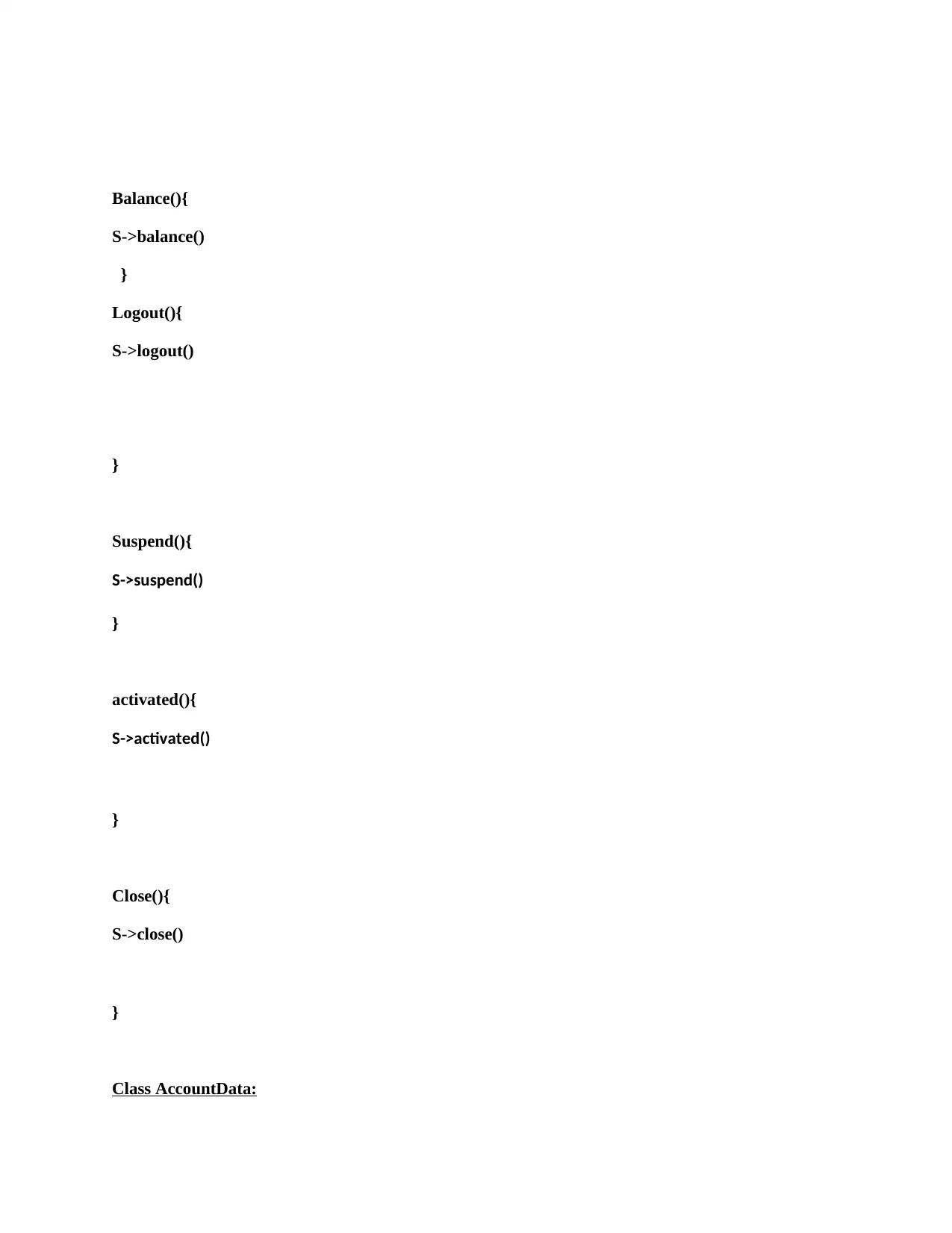UML Diagrams for ATM System
VerifiedAdded on 2019/09/16
|12
|463
|528
Practical Assignment
AI Summary
This assignment focuses on creating UML diagrams for a decentralized ATM system. The solution includes a class diagram illustrating the classes Account, AccountData, and ATMState (with subclasses Start, Idle, and Ready), detailing their attributes and methods. A sequence diagram is also provided, demonstrating the interaction between these classes for a specific operation sequence: OPEN, LOGIN, PIN, DEPOSIT, BALANCE, SUSPEND, and CLOSE. The class diagram shows the relationships between the classes and their attributes and methods, while the sequence diagram visualizes the flow of interactions between objects during the execution of the specified operations. The provided code snippets show the methods within each class, illustrating the state transitions and data manipulation involved in the ATM system's functionality.
1 out of 12















![[object Object]](/_next/static/media/star-bottom.7253800d.svg)